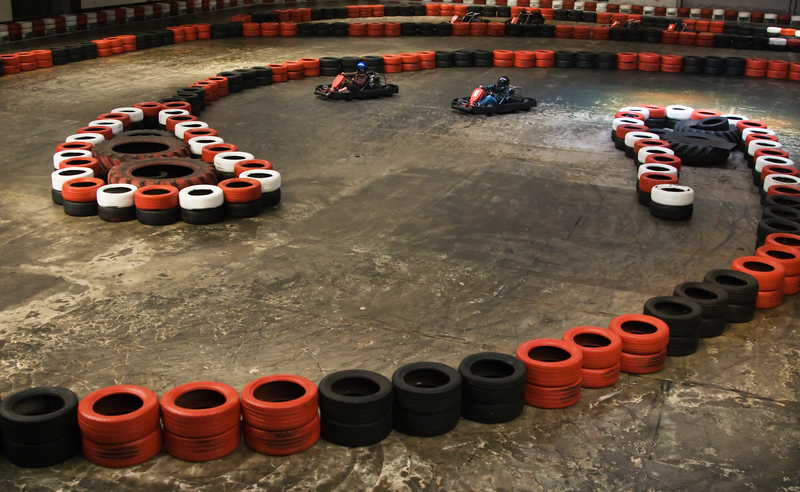Turn Used Materials Into Eye-Catching Functional Pieces: The Complete Guide
In today's world, creativity and sustainability go hand-in-hand. Imagine transforming discarded treasures into stunning, practical items for your everyday life -- all while helping the planet and saving money. Welcome to the world of upcycling used materials into eye-catching functional pieces! Whether you're a DIY enthusiast, a green-hearted homeowner, or just curious about eco-friendly decor, this article will guide you on how to breathe new life into old items.
Why Convert Used Materials Into Functional Art?
- Environmental Impact: Reducing waste by repurposing means less trash in landfills and a lower carbon footprint.
- Cost-Effectiveness: Upcycled projects often save you money compared to buying new furniture or accessories.
- Uniqueness: Each piece tells a story and adds unmatched character to your space.
- Personal Satisfaction: There's an immense joy in turning something old into something beautiful and practical.
Ready to turn your used materials into functional, eye-catching pieces? Let's dive into ideas, tips, and techniques!

What Counts as "Used Materials"?
Upcycling starts with the right materials. Used materials can include almost anything that would otherwise be thrown away. Here are some common sources:
- Wood Pallets from deliveries
- Glass Jars and Bottles
- Tin Cans
- Old Furniture (tables, chairs, dressers)
- Plastic Containers
- Discarded Fabric or Clothing
- Worn Tyres
- Newspapers and Magazines
- Electronics (parts, wires, circuit boards)
Almost anything that's no longer useful in its original form can become the raw material for your next head-turning functional creation.
Creative Ideas for Turning Used Materials Into Eye-Catching Functional Pieces
Furniture from Pallets
Used shipping pallets are one of the most versatile materials for upcycling. With a little sanding and some screws, you can turn them into:
- Outdoor benches
- Coffee tables
- Shoe racks
- Bookshelves
Pro tip: Paint or varnish for aesthetic appeal and durability.
Transform Glass Jars into Storage Solutions
Glass jars and bottles don't belong in the recycling bin just yet! You can repurpose them in a variety of functional ways:
- Spice and dry goods containers for the kitchen
- Pencil and brush holders for workspaces
- Hanging lanterns for your garden or patio
- Soap dispensers with simple lid modifications
Revitalize Old Furniture
An old chair or dresser doesn't need to end its life at the landfill. Paint, reupholster, or combine different pieces to create unique and functional masterpieces:
- Convert a dresser into a bathroom vanity
- Turn a crib into a children's desk
- Use headboards as garden bench backs
Unique Planters from Everyday Objects
Give upcycled decor a green twist by turning used items into plant holders:
- Tin cans and boots for quirky indoor planters
- Teapots and cups as small succulent containers
- Wooden drawers as vertical gardens
Tip: Drill holes in the bottom for drainage.
Handmade Lighting from Discarded Objects
You don't have to buy expensive designer lights when you can create your own from used materials:
- Colanders for pendant lights
- Wine bottles as lamp bases
- Wood scraps as wall-mounted fixtures
*Combining functionality with style has never been easier.*
Repurpose Textiles into Stylish Home Accessories
Old fabric and clothes can easily become new functional decor pieces:
- Cushion covers from t-shirts
- Patchwork quilts from jeans and shirts
- Rugs and table runners from combined scraps
*Mix and match colors, patterns, and textures for a truly unique effect.*
How to Turn Used Materials Into Eye-Catching Functional Pieces: Step-by-Step
1. Identify Materials and Their Potential
Before you start, take time to survey what used materials you have. Ask yourself:
- Can it be cleaned?
- Is it structurally sound?
- What original purpose did it serve, and can it be adapted?
2. Visualize and Design
Sketch your idea or look for inspiration online. Think about:
- Where will the finished piece be used?
- What function should it serve?
- What's the best way to combine aesthetics and practicality?
3. Prepare and Clean Materials
Always clean thoroughly before starting your project. Remove nails, sand wood, wash fabrics, and disinfect containers if necessary.
4. Assemble and Transform
Use basic tools like screwdrivers, glue, nails, and needles. Don't be afraid to get creative -- mix different materials, add hardware, or introduce decorative touches.
5. Add the Finishing Touches
Paint, varnish, or decorate to match your style. Consider reusable hardware, eco-friendly paint, and sustainable finishes to further reduce your environmental footprint.
Inspirational Examples: Before and After
Pallet Coffee Table
Before: Several weathered wooden pallets.
After: A sturdy, rustic coffee table with wheels and a glass top, perfect for any living room.
Mason Jar Herb Garden
Before: Six empty mason jars.
After: A wall-mounted indoor herb garden using a salvaged wooden board and metal clips -- both functional and decorative.
Old Ladder Book Shelf
Before: A paint-splattered, rickety wooden ladder.
After: After reinforcement and repainting, the ladder becomes an organizing bookshelf for your home office or bedroom.
Benefits of Transforming Used Materials
- Saves Money: Avoids buying new items
- Customizes Your Space: Personal, one-of-a-kind results
- Eco-Friendly: Less waste and reduced resource consumption
- Builds Skills: Improves DIY ability and creativity
Common Challenges and How to Overcome Them
- Finding the Right Materials: Check online marketplaces, community boards, and ask friends and neighbors for unused items.
- Lack of Tools or Experience: Start with simple projects and borrow or rent equipment. Dozens of tutorials are available online.
- Safety Concerns: Always wear gloves, masks, and goggles. Work in well-ventilated areas and use non-toxic paints/adhesives.
Tips for Making Used Materials Functional and Attractive
- Mix Materials: Blend wood, metal, glass, and fabric for modern, interesting results.
- Reinforce When Needed: Add nails, screws, or brackets to ensure safety and durability.
- Emphasize Usability: Choose projects that add real value: storage, seating, organization, lighting.
- Stay True to Your Style: Use colors and designs that reflect your personality.

Where to Find Inspiration for Upcycling Projects
- Social media: Instagram, Pinterest, YouTube DIY channels
- Upcycling Blogs and Forums
- Artisan Markets and Local Workshops
- Books and Magazines on Sustainable Design
*The world is full of ideas -- let your imagination run wild!*
Conclusion: Start Turning Used Materials Into Eye-Catching Functional Pieces Today
Embracing the art of upcycling used materials into functional, eye-catching pieces is more than a trend. It's a lifestyle choice that benefits your home, your wallet, and the earth. From repurposed pallets to revamped fabrics, your next unique, sustainable masterpiece starts with something you were ready to throw away.
So, dig into those closets and garages. Gather your used materials and unleash your creativity. Your journey to creating stunning, functional art awaits!
- Impress your friends with unique, handmade creations
- Reduce waste and do your part for the environment
- Enjoy the satisfaction of building something truly your own
Get started today and turn used materials into eye-catching functional pieces that will transform your space and inspire others.
